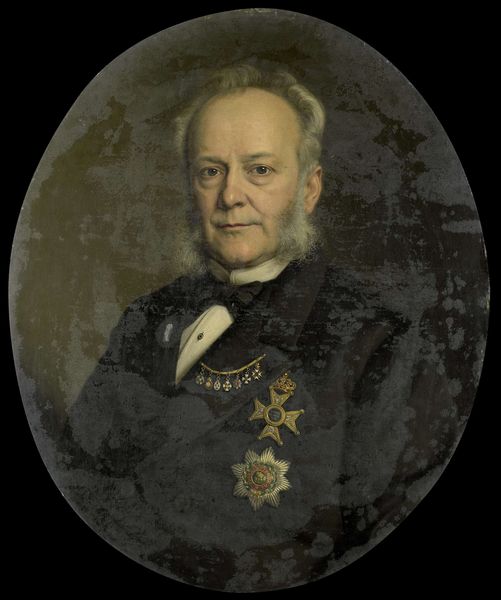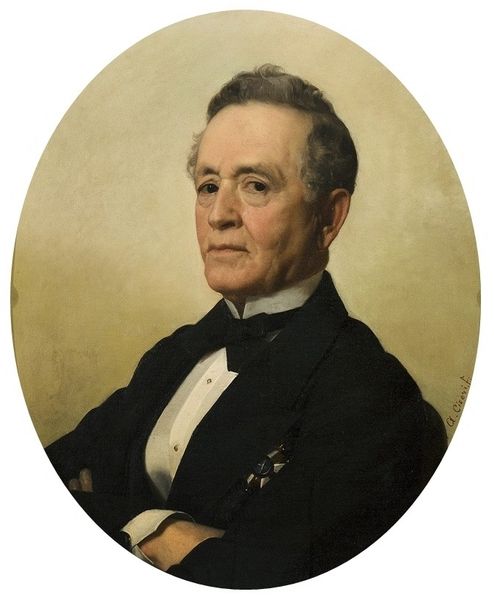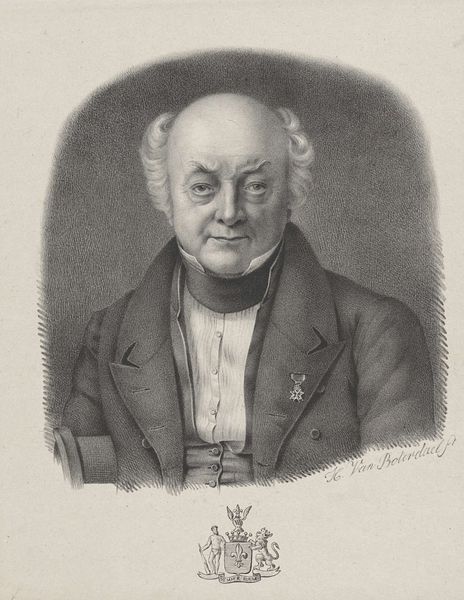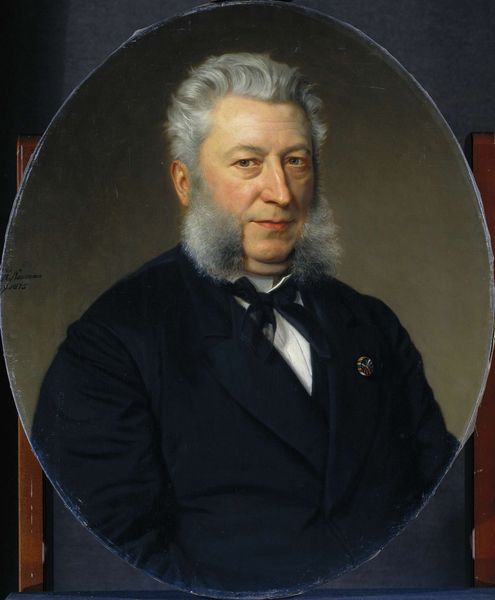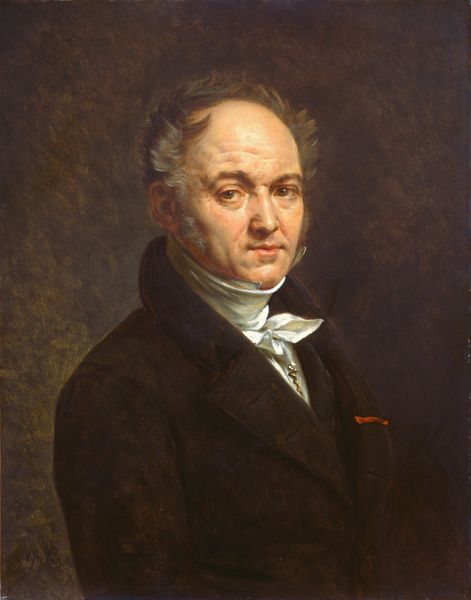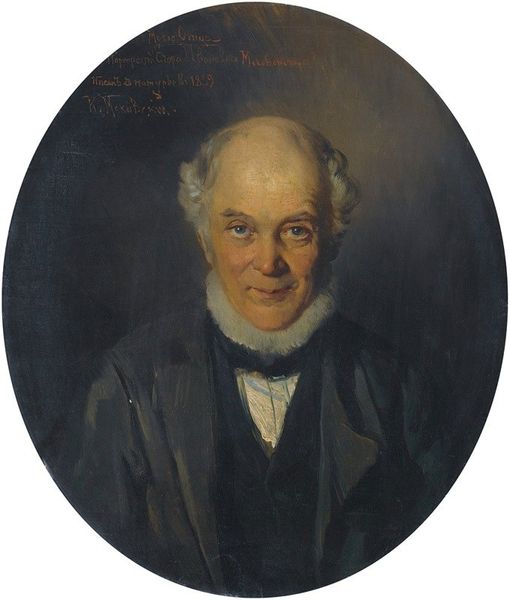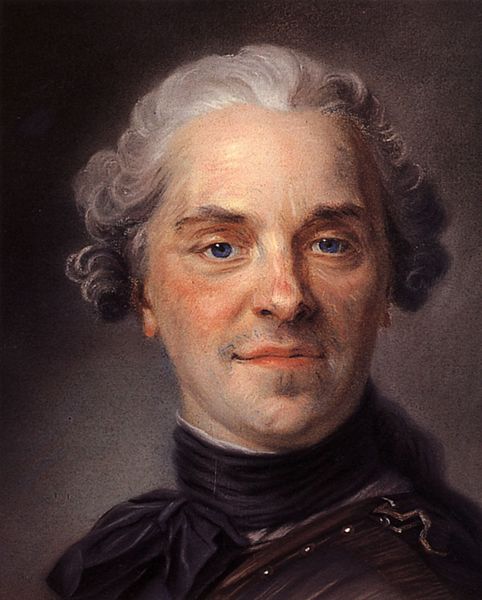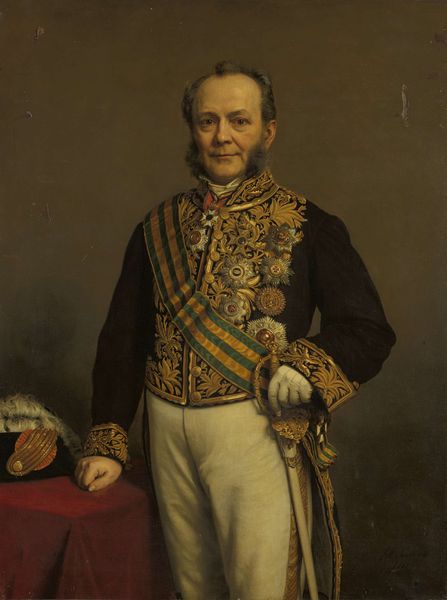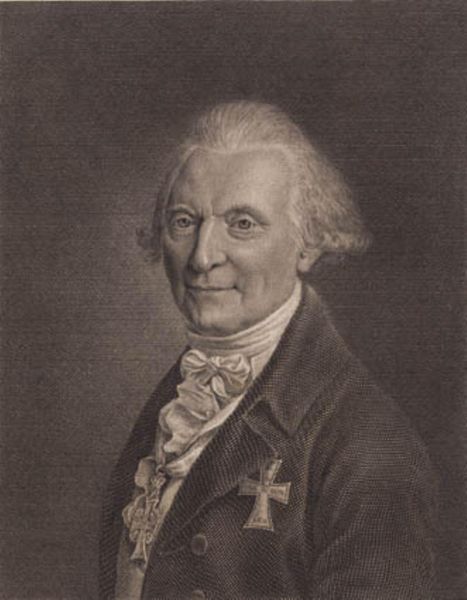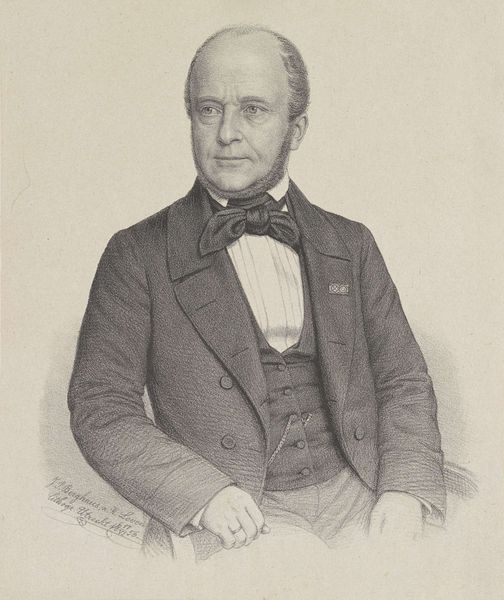
Pieter Mijer (1812-81). Gouverneur-generaal van Nederlands Oost Indië 1876
0:00
0:00
painting, oil-paint
#
portrait
#
painting
#
oil-paint
#
history-painting
#
academic-art
#
realism
Dimensions: height 75.8 cm, width 62.7 cm, thickness 3 cm, depth 9.5 cm
Copyright: Rijks Museum: Open Domain
Curator: This portrait, rendered in oil on canvas, is entitled "Pieter Mijer (1812-81). Gouverneur-generaal van Nederlands Oost-Indië." It dates back to 1876 and was crafted by Johan Heinrich Neuman. What's your initial impression? Editor: There's an undeniable gravitas, almost somberness to the portrait. The muted palette certainly contributes to this effect. He appears quite stoic, though his gaze holds a hint of… weariness, perhaps? The composition is formal, certainly befitting his stature. Curator: Absolutely. Considering Mijer’s role as Governor-General of the Dutch East Indies, the formality serves a specific purpose. Portraits of colonial officials were crucial tools for projecting authority back to the colonizing nation and for asserting their presence within the colonies themselves. Editor: Note the very precise brushstrokes rendering the details of his garments and medals. It emphasizes materiality—silk, velvet, gold—that signifies power, but is there perhaps a lack of dynamism in the pose? Curator: Well, artistic styles were bound to their time. The rigid, formalistic pose adheres to the conventions of official portraiture from that era, highlighting realism and power. But also, consider how portraits legitimized power dynamics inherent in Dutch colonial rule. It's about representation, of course. Editor: Representation yes, and the weight of that authority is evident even in something as simple as the restricted colour palette or limited brushstrokes. The way the artist manipulated light and shadow almost sculpts his face, making it seem imposing. I think there’s an artistry in achieving such impact. Curator: And in presenting a figure destined to reinforce particular power dynamics back in the colonizing country. Neuman's representation would reaffirm colonial structures within both Dutch society and the broader historical context of colonialism. His realism places him not as an ideal, but an authority. Editor: It does make you reflect on how much a painting is not just an aesthetic object, but an instrument of power, especially in an era defined by expansion. I suppose, on one hand, it reflects the politics of its time in ways a landscape painting never could. Curator: It certainly offers a starkly different aesthetic purpose to something like Van Gogh’s paintings of sunflowers, yes? In any case, the opportunity to understand Mijer's importance within a changing socio-political atmosphere becomes all the more rich because we’re standing in front of this canvas. Editor: Indeed, analyzing the tension and interplay between these various factors illuminates why a seemingly straightforward image holds immense complexity.
Comments
No comments
Be the first to comment and join the conversation on the ultimate creative platform.
